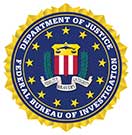|

 |
FBI Releases
2015 Hate Crime Statistics
Today the FBI released Hate Crime Statistics, 2015, the Uniform Crime
Reporting (UCR) Program’s latest compilation about bias-motivated
incidents throughout the nation. This year’s collection marks the 25th
anniversary of the FBI gathering and publishing data about
bias-motivated crimes. The first publication in 1990 included limited
data from only 11 states. The collection has grown each year into the
wide-ranging report presented today. Submitted by 14,997 law
enforcement agencies across the nation, the 2015 data provide
information about the offenses, victims, offenders, and locations of
hate crimes; however, the UCR Program does not estimate offenses for
the jurisdictions of agencies that do not submit reports. Highlights of
Hate Crime Statistics, 2015, follow.
Law enforcement agencies submitted incident reports involving 5,850
criminal incidents and 6,885 related offenses as being motivated by
bias toward race, ethnicity, ancestry, religion, sexual orientation,
disability, gender, and gender identity in 2015.
Victims of Hate Crime Incidents
There were 5,818 single-bias incidents involving 7,121 victims. A
percent distribution of victims by bias type showed that 59.2 percent
of victims were targeted because of the offenders’
race/ethnicity/ancestry bias, 19.7 percent were targeted because of the
offenders’ religious bias, and 17.7 percent were victimized because of
the offenders’ sexual-orientation bias. Victims targeted because of the
offenders’ bias against gender identity accounted for 1.7 percent of
victims of single-bias incidents; disabilities, 1.2 percent; and
gender, 0.4 percent. (Due to rounding, percentage breakdowns may not
add to 100.0 percent.)
Thirty-two multiple-bias hate crime incidents involved 52 victims.
Offenses by Crime Category
Of the 4,482 hate crime offenses classified as crimes against persons
in 2015, intimidation accounted for 41.3 percent, simple assault
accounted for 37.8 percent, and aggravated assault for 19.7 percent.
Eighteen murders and 13 rapes (12 from agencies that collected data
using the revised definition of rape) were reported as hate crimes.
Beginning with the 2013 data collection, the UCR Program’s revised
definition of rape is “penetration, no matter how slight, of the vagina
or anus with any body part or object, or oral penetration by a sex
organ of another person, without the consent of the victim.” [This
includes the offenses of rape, sodomy, and sexual assault with an
object as converted from data submitted via the National Incident-Based
Reporting System (NIBRS).
The UCR Program’s legacy definition of rape is “The carnal knowledge of
a female forcibly and against her will.”
There were 2,338 hate crime offenses classified as crimes against
property. The majority of these (72.6 percent) were acts of
destruction/damage/vandalism. Robbery, burglary, larceny-theft, motor
vehicle theft, arson, and other offenses accounted for the remaining
27.4 percent of crimes against property.
Sixty-five additional offenses were classified as crimes against
society, which were collected via NIBRS. This crime category represents
society’s prohibition against engaging in certain types of activity
such as gambling, prostitution, and drug violations. These are
typically victimless crimes in which property is not the object.
Known Offenders
In the UCR Program, the term known offender does not imply that the
suspect’s identity is known; rather, the term indicates that some
aspect of the suspect was identified, thus distinguishing the suspect
from an unknown offender. Law enforcement agencies specify the number
of offenders and, when possible, the race of the offender or offenders
as a group. Beginning in 2013, law enforcement officers could also
report whether suspects were juveniles or adults, as well as the
suspect’s ethnicity when possible.
Of the 5,493 known offenders, 48.4 percent were white, and 24.3 percent
were black or African-American. The race was unknown for 16.2 percent.
Other races accounted for the remaining known offenders: 1.0 percent
were Asian; 0.9 percent were American Indian or Alaska Native; 0.1
percent were Native Hawaiian or Other Pacific Islander; and 9.1 percent
were of a group of multiple races.
Of the 3,421 known offenders for whom ethnicity was reported, 25.7
percent were not Hispanic or Latino, 6.1 percent were Hispanic or
Latino, and 1.6 percent were in a group of multiple ethnicities.
Ethnicity was unknown for 66.6 percent of these offenders.
Of the 3,331 known offenders for whom ages were known, 84.7 percent
were 18 years of age or older.
Locations of Hate Crimes
Law enforcement agencies may specify the location or an offense within
a hate crime incident as one of 46 location designations. In 2015, most
hate crime incidents (31.5 percent) occurred in or near
residences/homes; 17.4 occurred on
highways/roads/alleys/streets/sidewalks; 8.3 percent occurred at
schools/colleges; 5.6 percent happened at parking/drop lots/garages;
and 4.4 percent took place in churches/synagogues/temples/mosques. The
location was reported as other/unknown for 11.0 percent of hate crime
incidents. The remaining 21.8 percent of hate crime incidents took
place at other or multiple locations.
|
|
|
|

